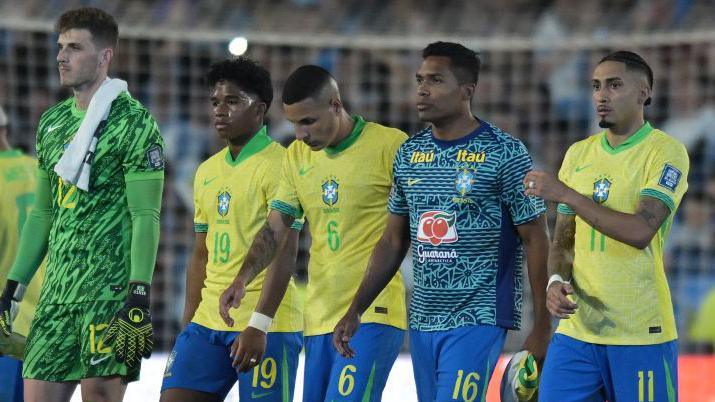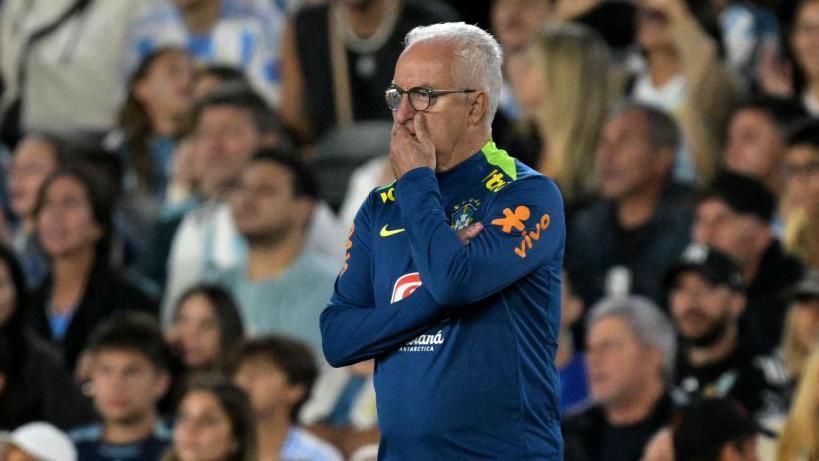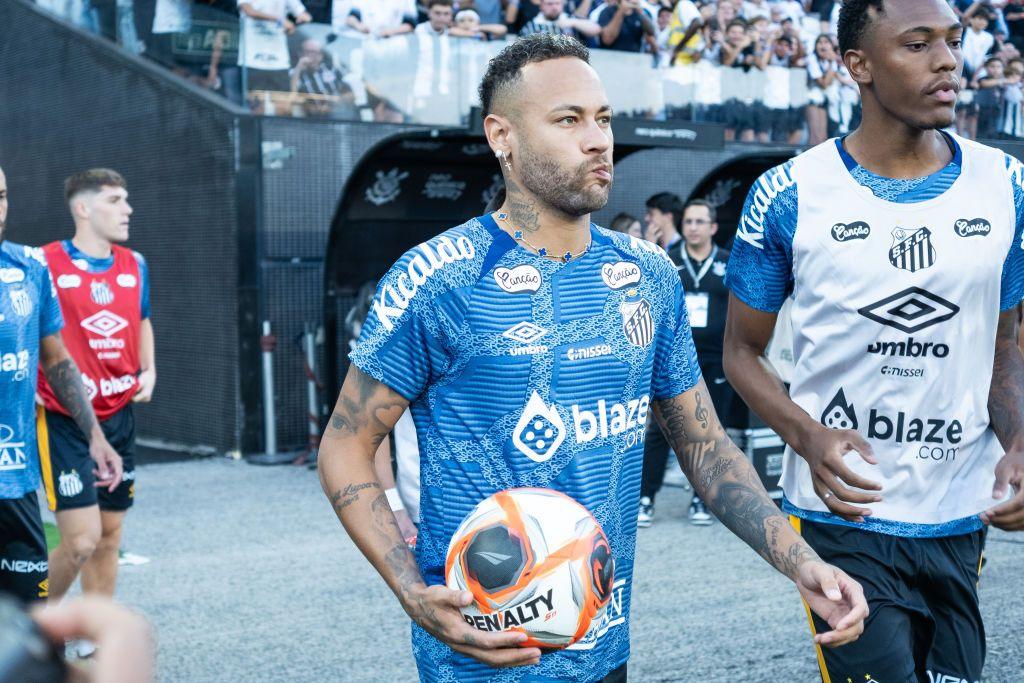What’s going on with Brazil?

Brazil were beaten 4-1 by Argentina in their most recent World Cup qualifier
-
Published
In any previous World Cup, there would be genuine fear about Brazil failing to qualify. Not this time.
In an expanded competition, with six South American teams making it through automatically, Brazil have a six-point cushion over a Venezuela team who have just registered their first victory in 10 games.
With four rounds to go, it is impossible to see Brazil not making the cut. But that is hardly the point.
For Brazil, World Cup qualification now serves one purpose – it provides a sequence of competitive matches during which they hope to build a side capable of winning the trophy. And with just over a year to go until 2026, that looks a long way off.
It is easy to forget how good Brazil were in the last World Cup, where they lost in the quarter-finals on penalties to a Croatia team whose only shot on goal in the match took a cruel deflection.
The Qatar 2022 Brazil side were solid – goalkeeper Alisson could have taken a deckchair out for most of the games – with flashes of brilliance. They could have won that competition.
So how come they have fallen back so much? How can a team packed with so many good players form such a dismal unit?
The team that was thrashed 4-1 by Argentina on Tuesday appeared to have no midfield, and was unable either to attack or defend.
A decent man out of his depth?

Dorival Junior is under pressure following the heavy defeat by Argentina
Tuesday’s prolonged humiliation did not come out of the blue.
In game after game the team have looked disjointed, without clear strategies for progressing the ball down the field, and suffering from the possibility of being both outplayed and outnumbered in central midfield.
Individual talent has papered over the cracks – like on Thursday, when a stoppage-time Vinicius Jr special gave them a victory over Colombia their play had not really deserved.
But it can’t happen all the time.
And if the film is bad, especially if the cast is impressive, the director must be to blame.
There is a crisis in Brazilian coaching. It is hard to produce coaches when there is no time to train and no job security. That is the reality of domestic Brazilian football, and helps explain why almost all of the successful coaches in the country are now foreign – either Argentine or, especially, Portuguese.
The national boss – for now anyway – Dorival Jr is a product of the domestic game, with more than four decades’ experience as player and coach.
But on the international stage he comes across as a decent man thoroughly out of his depth.
Did he really think he could travel to Argentina and play two men in central midfield? Why not drop deep and create space for the counter-attack, as he did a year ago against England at Wembley? And when cool heads were required, his team came across as a bag of nerves, all too willing to get involved in cheap spats.
Of the three duties of the coach – pick the team, determine the strategy and set the emotional tone – Dorival failed dismally, and it is very hard to see how he can keep his job.
If he is to be replaced, there would seem to be two options. One is to go foreign – the Portuguese coach Jorge Jesus would be a strong candidate. The other would be to fast-track former Chelsea left-back Filipe Luis – a man of great intelligence who has made an impressive start to his coaching career with Rio giants Flamengo.
‘Paqueta had become the most important player’
Whoever comes in – or Dorival if he manages to hang on – will have to deal with a simple observation – central midfield is not an optional extra.
It is an area where Brazil have had a problem for a while – a consequence of the 1990s trend of splitting the middle of the park into a pair of midfielders who only defend and a duo who mostly attack. It was at this point Brazilian play lost much of its former fluency, instead investing in rapid breaks down the flanks.
It is in this context that the problems of Lucas Paqueta are so significant.
The West Ham midfielder was on the verge of becoming a big-money Manchester City signing when scandal struck, and his career – now threatened – has not recovered.
The evidence of Dorival’s first games in charge – a year ago away to England and Spain – was Paqueta had become the most important player in the team, the man capable of filling space in midfield, dictating the rhythm of the game and unleashing the pace of the likes of Vinicius Jr.
-
-
Published12 March
-
-
-
Published4 days ago
-
Can Neymar still do it?
The absence of Paqueta almost certainly led to Dorival building his hopes for these international dates around the return of Neymar – which, predictably, turned out to be ludicrously premature.
After so long out injured, it was only to be expected that Neymar would run into muscular problems, and he will need much more time on the field to ease his way back to a level where he can tip the balance.
At 33, he is an unknown quantity. But there is a gaping hole in the team for the type of deep-lying playmaker role he could fill.
Romantics might recall 2002, when Ronaldo looked all washed up only to make a triumphant return from injury and carry a Brazil side that almost failed to qualify all the way to World Cup title number five.
They are still waiting for number six.
If they can do it next year then, in the wake of Tuesday’s humiliation, it will be a candidate for one of football’s great comebacks.

Neymar’s absence from the Brazil team was prolonged by a muscular injury







